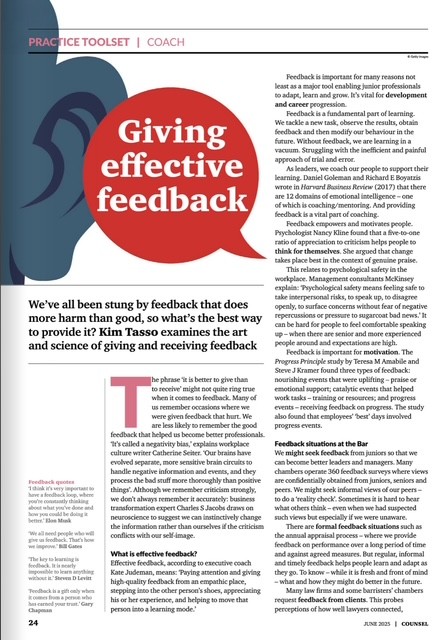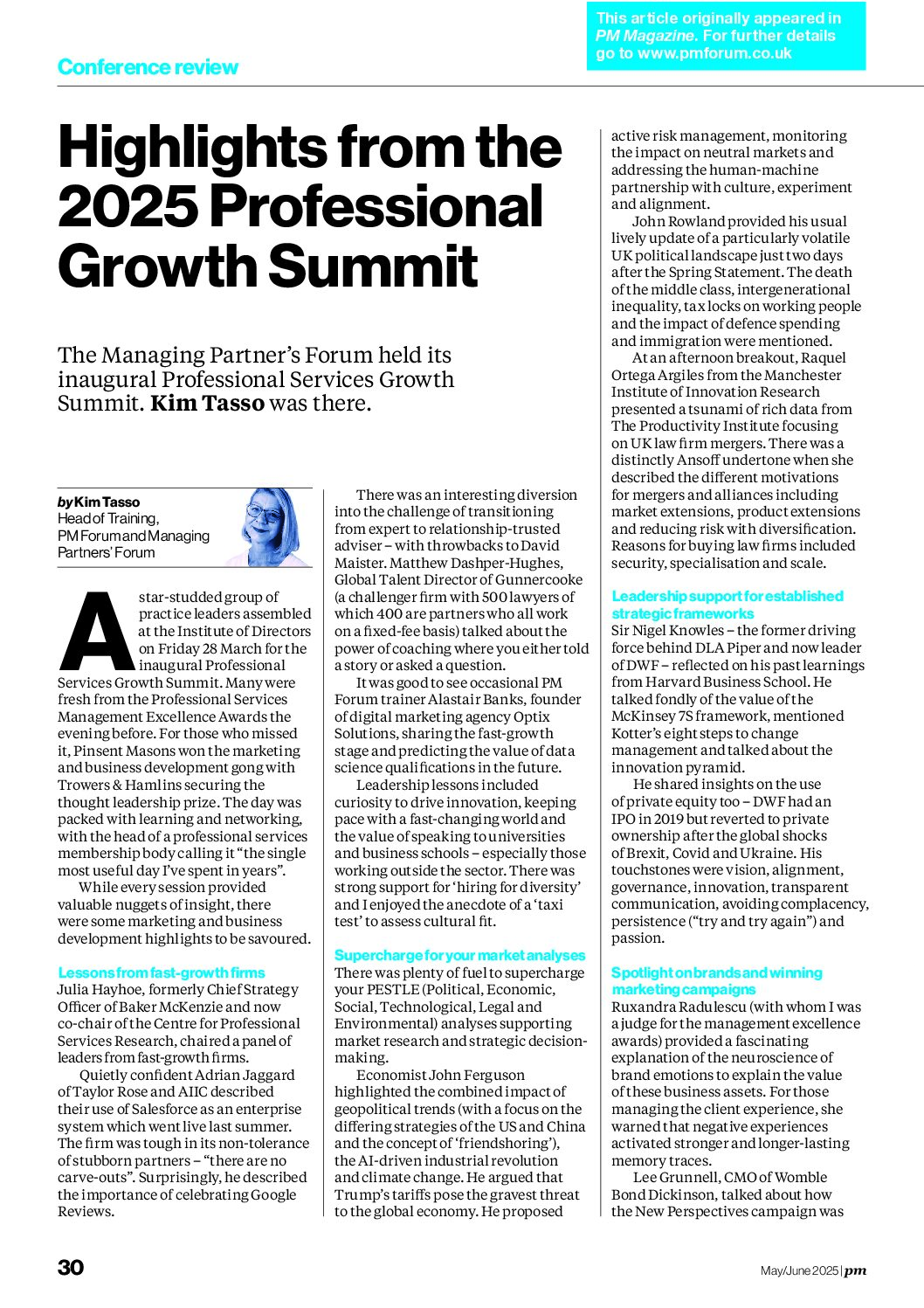
Recently I ran another of the popular “marketing planning in a nutshell” training session for PM Forum http://www.pmforum.co.uk/training/. The 18 delegates – from a variety of legal and accountancy firms – selected the key topics discussed for a follow up blog post: 3 themes from marketing planning: Stepping stones, persuasion and momentum.
Stepping Stones
It’s obvious that before we develop a strategy and a plan we need to be clear what we want to achieve.
Whether we call them aims, goals or objectives they need to be clear. Most people know about SMART objectives (Specific Measurable Achievable Realistic and Time-specific). But too often the goals are long term financial goals expressed in terms of fee income or profits. You need goals for the short, medium and long term.
Marketing objectives are traditionally concerned with the amount of products or services sold into specific markets – and how we fare compared to our competitors’ share of the market.
But in professional services, we often have to work harder to help our fee-earners craft realistic goals that make it easier to select the appropriate strategy and action and also to measure progress in terms of process and results when the sales cycle can be very long – up to three years in some cases.
And these goals need to be established at the firm level, for each market, for each practice area or service. These need to be aligned and then translated into each fee-earner’s targets. This is sometimes known as the hierarchy of goals.
You can start at the top (“top down”) – look at what you want to achieve overall – and work out what proportion must be generated by each part. Or you can start at the bottom (“bottom up”) and see what each part of the firm can produce and aggregate to the total. Typically, you need a blend of both top down and bottom up to agree the goals. Be more strategic: Top-down or bottom-up, marketing (kimtasso.com)
One of the methods that I have found quite useful is to use a stepping stone approach. In effect it asks people to think of what they want to achieve in the longer term – say in three or five years’ time. And then work back to see what they would need to achieve in each of the years beforehand.
An alternative method is to look at the overall total and investigate what proportion is likely to come from repeating work from existing clients – and the extent to which that can be grown with relationship management strategies such as Key Account Management (KAM) compared to what new business is required. KAM approaches can be deployed for generating more work from particularly valuable referrers as much as from major clients.
You can then consider whether the target will be achieved by low volume but high value transactions (say, 10 transactions at £1m) or a high volume, low value approach (say, 1,000 transactions at £1,000). Usually there is a mix but considering the balance will provide help with breaking down the goals into stepping stones. If it is the high value approach then it is possible to break down stepping stone goals to reach a limited number of prime targets.
A similar approach – when it comes to sales and new business development – is to consider the pipeline or funnel approach. If you have a grasp of your sales cycle, you should know, for example, how many web visits you need to generate the desired number of sign-ups or enquiries, and how many enquiries are needed to get the desired number of people to attend events, or how many meetings you need to identify a suitable number of opportunities, and how many opportunities you need in play to generate the required number of pitches and finally how many pitches you need (and at what conversion rate) to generate the required number of transactions or assignments.
Goal setting within the marketing planning process is addressed here: Marketing planning in a nutshell – simple and complex plans (kimtasso.com)
Goal setting for digital marketing strategies is addressed here: create a digital marketing strategy in a professional services firm (kimtasso.com)
Persuasion
If you search my blog you will find numerous blogs about the science of persuasion (psychology), achieving buy-in and sales and selling techniques and a multitude of persuasion techniques are covered there.
A good introduction to persuasion is here http://kimtasso.com/top-tips-on-the-psychology-of-persuasion/
I suppose my main thought on persuading fee-earners to become engaged in the marketing and business development planning process is to involve them from the start. Guide them through the process – perhaps spending just an hour on each topic across a series of meetings to avoid overload.
So you might organise a series of sessions on topics such as: where are we now, what does the financial information show, who are our main clients, who are our main referrers, what is it that we want to achieve, what should be do about direct approaches to clients (traditional methods and online), what should we do to develop our most critical referrers, what should we do to raise our profile, what do we do to generate leads, what do we do to approach specific targets and what do we expect each lawyer to do?
Provide internal analyses and external research that highlight the challenges and opportunities and let them make up their own mind. Use your expertise to show what the various options are at each stage and how to make decisions as to which course to adopt.
While the destination – the final plan – is important, it is often the journey of discovery and decisions that are taken on the way that is most valuable in persuading people to commit to a plan. So remember that whilst you might need a detailed plan containing lots of pages of analyses and detail, the fee-earners will require a short (one page) summary that encapsulates the essence of the analysis, goals, strategy and actions.
But in the context of achieving participation in both the development and implementation of a plan (and the necessary change in culture and behaviour) I would recommend you read the book “Switch” by Chip and Dan Heath http://kimtasso.com/change-management-book-review-switch-how-to-change-things-when-change-is-hard-by-chip-and-dan-heath/.
My other favourite sources on persuasion are contained in the following two books by Robert Cialdini:
http://kimtasso.com/faq/how-can-i-improve-my-persuasion-skills/
And this one focuses on persuasive writing:
Maintaining momentum
Maintaining momentum during the execution and implementation of a marketing plan – as well as early involvement and participation in the plan’s creation – requires a combination of motivation on the part of the people, good change management and lots of communication.
For a general introduction to motivation: http://kimtasso.com/faq/how-do-you-increase-motivation-for-marketing-and-business-development/
This blog summarises a lot of ideas about changing behaviour http://kimtasso.com/be-more-strategic-creating-behaviour-change/
And, in addition to the book mentioned above by Chip and Dan Heath I would suggest the following sources on change management:
http://kimtasso.com/6-top-tips-for-change-management/
http://kimtasso.com/reflections-on-managing-change-and-leadership/
The other thing to remember is to communicate regularly on progress – acknowledge small wins, recognise effort and progress, share success stories, show how close you are to achieving goals.
Other topics of interest
Here are signposts to further information on some of the other topics that generated particular interest at the session:
Strategy and Strategic planning
http://kimtasso.com/strategy-basics/
http://kimtasso.com/strategy-workshop-skills-resources-involvement-tools-journey/
Segmentation and personas
http://kimtasso.com/back-basics-importance-segmentation-personas/
http://kimtasso.com/faq/how-do-i-tackle-profiling-for-my-key-client-management-programme/
http://kimtasso.com/not-so-much-pimp-my-ride-more-niche-my-market/
I was also asked to write blogs on the following topics:
- Why produce and use marketing plans?
- Direct versus indirect channels
- Segmentation methods – by issue
If you don’t see anything from me over the next couple of months, give me a nudge and I’ll get writing.









